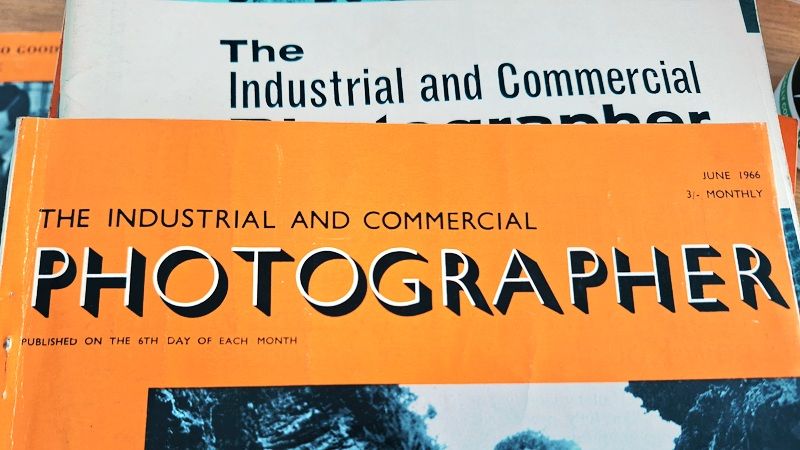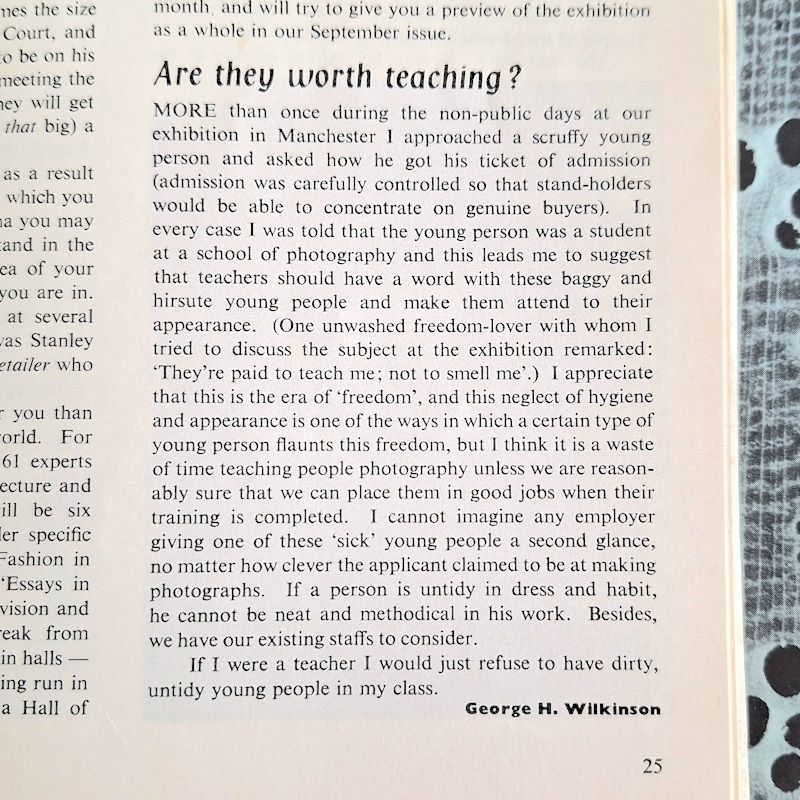I’ve been working my way through the job lot of journals I rescued from the Liverpool Museums building revamp.
There’s around 2000 periodicals to look through. From the 1960s to the early 2000s. Its the earlier publications that I’m probably more interested in, as I think the period between the 1920s -1970s is a little under studied and of less interest (at the moment) compared to the early origins of photography.
I’m particularly interested in any articles or letters concerning Heritage Imaging (including specific imaging methods) and articles related to photographic education, these tend to be more technical than artistic.
The Industrial and Commercial Photographer magazine I had never heard of, but I have issues spanning a couple of decade’s. Subjects include all manner of commercial and industrial photography, including forensics, medical, and heritage imaging.

I’ll put together a blog post later in the year about education and heritage imaging, but I’ll post the odd oddity now and again that catches my eye.
Here’s today’s from June 1966…

“More than once during the non-public days at our exhibition in Manchester, I approached a scruffy young person and asked how he got his ticket of admission (admission was carefully controlled so that stand-holders would be able to concentrate on genuine buyers).
In every case, I was told that the young person was a student at a school of photography, and this leads me to suggest that teachers should have a word with these baggy and hirsute young people and make them attend to their appearance. (One unwashed freedom-lover with whom I tried to discuss the subject at the exhibition remarked: They’re paid to teach me; not to smell me.) I appreciate that this is the era of ‘freedom’, and this neglect of hygiene and appearance is one of the ways in which a certain type of young person flaunts this freedom, but I think it is a waste of time teaching people photography unless we are reasonably sure that we can place them in good jobs when their training is completed. I cannot imagine any employer giving one of these ‘sick’ young people a second glance, no matter how clever the applicant claimed to be at making photographs. If a person is untidy in dress and habit, he cannot be neat and methodical in his work. Besides,
we have our existing staffs to consider.
If I were a teacher, I would just refuse to have dirty, untidy young people in my class.
George H. Wilkinson“
George H. Wilkinson was the Editor of the publication.
Well, that’s telling you! I remember experiencing similar attitudes when I was a student, at university between 1965 and 1968, but never after graduation when things had become somewhat normalised.
I’m pleased to say that I had a look on the internet and can’t find a biographical reference to this particular George Wilkinson so he has faded into obscurity by the looks of it.